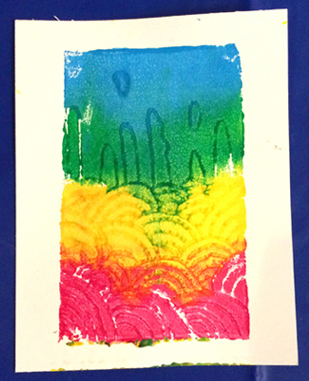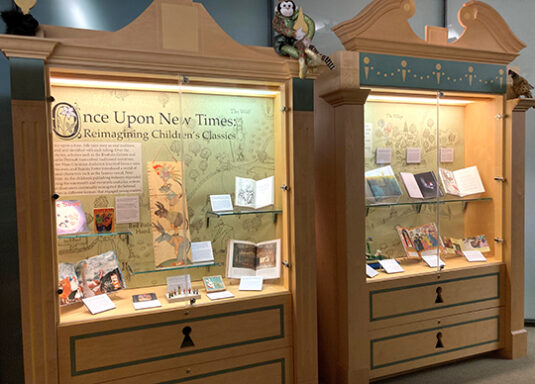 Come see tales transformed at “Once Upon New Times: Reimagining Children’s Classics,” currently on display at the Cotsen Children’s Library! Curated as a companion to the larger exhibit in the Milberg Gallery of Firestone Library, each item offers a different perspective on a cherished classic. From highly imaginative physical transformations to diverse adaptations, we hope you enjoy these selections from the Cotsen collections, curated by Andrea Immel, Dana Sheridan, and Katie Zondlo. We have a few items to share below…
Come see tales transformed at “Once Upon New Times: Reimagining Children’s Classics,” currently on display at the Cotsen Children’s Library! Curated as a companion to the larger exhibit in the Milberg Gallery of Firestone Library, each item offers a different perspective on a cherished classic. From highly imaginative physical transformations to diverse adaptations, we hope you enjoy these selections from the Cotsen collections, curated by Andrea Immel, Dana Sheridan, and Katie Zondlo. We have a few items to share below…
Katie and I were especially delighted that LEGO’s “Once Upon a Brick” Pop-Up Book made it in the exhibit! Originally posted on the blog here, this set not only renders “Jack and the Beanstalk” in 3D, the pop-up mechanism delights visitors both young and young-at-heart.
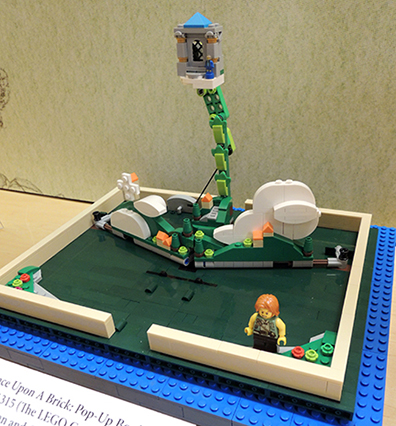
LEGO. Once Upon A Brick: Pop-Up Books. Ideas No. 21315 (The LEGO Group, 2018). Jason Allemann and Grant Davis (LEGO Ideas member submitters), Wesley Talbott and Crystal Marie Fontan (LEGO designers/graphics).
Visitors can also take a look at a kamishibai version of Alice in Wonderland, which includes a red-dressed Alice and a white rabbit in snappy pinstriped trousers. Those unfamiliar with the Japanese performance art of kamishibai can learn more here.
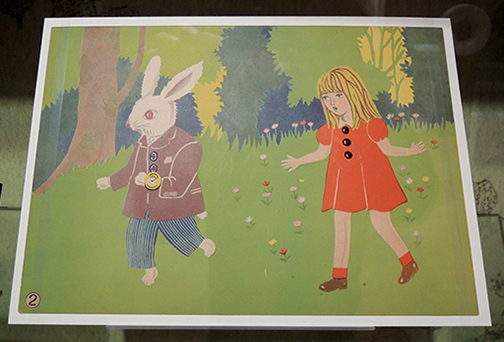
Takahashi Gozan, adaptor. Fushigi no kuni no Arisu-chan. Illustrated by Seiichi Yuno. (Tokyo: Nihon Kamishibai Gento Kabushiki Kaisha, Shōwa 27, 1952). Cotsen Children’s Library, Department of Special Collections, Princeton University Library
Also featured is the gorgeous book The Singing Bones by multiple award winning, and New York Times bestselling, author, illustrator, artist, and filmmaker, Shaun Tan. Masterfully rendered, the book distills classic fairy tales down to a single page (or sometimes a paragraph!) and represents it with a powerfully elemental sculpture. You can hear Tan discuss it, as well as his other books, here.
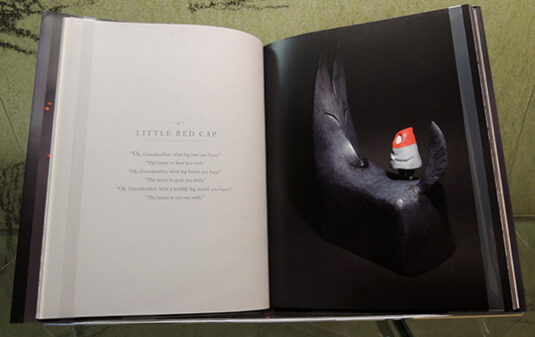
Shaun Tan, reteller/illustrator. The Singing Bones: Inspired by Grimms’ Fairy Tales. (New York: Arthur A. Levine Books, 2016). Cotsen Children’s Library, Department of Special Collections, Princeton University Library
I’ll also share this humorous 1939 pamphlet from General Electric Company titled “Mrs. Cinderella.” Here the story of Cinderella is retold using General Electric products (while also thwarting goblins messing with getting dinner prepared for her happily ever after). You can read more about this particular item in Andrea Immel’s excellent post on Cotsen’s Curatorial blog.
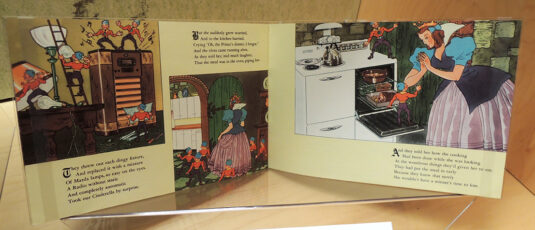
Mrs. Cinderella. Illustrated by Corydon Bell. (New York: General Electric Co., 1939). Cotsen Children’s Library, Department of Special Collections, Princeton University Library
“Once Upon New Times: Reimagining Children’s Classics” runs through March 2024. If you’re in the area, please come and visit! You will find directions and hours to Cotsen Children’s Library here, and we have some fun community programs and events coming up in connection with the exhibit (hint: think gingerbread architecture)!

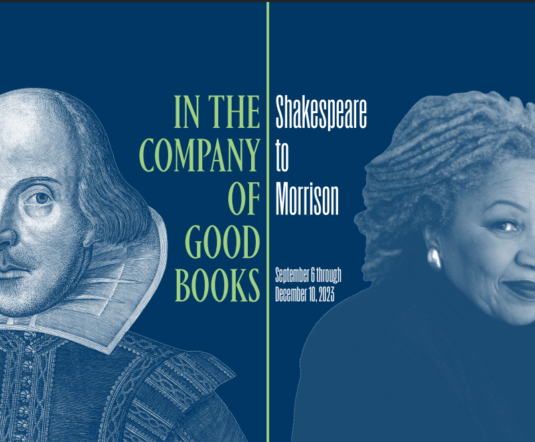 Keep company with literary luminaries this fall! The Department of Special Collections at Princeton University Library invites you to “In the Company of Good Books: Shakespeare to Morrison,” currently on display in the Milberg Gallery of Firestone Library through December 10th.
Keep company with literary luminaries this fall! The Department of Special Collections at Princeton University Library invites you to “In the Company of Good Books: Shakespeare to Morrison,” currently on display in the Milberg Gallery of Firestone Library through December 10th.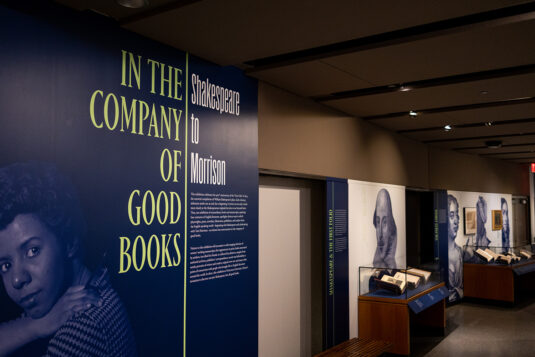
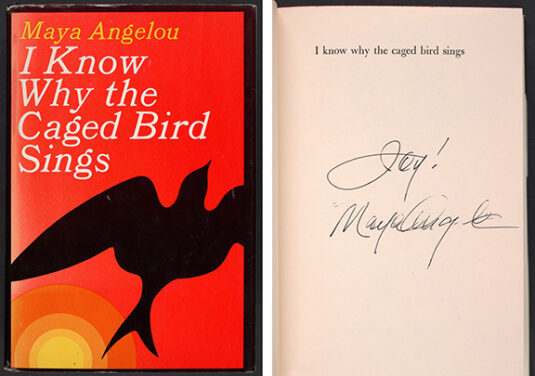
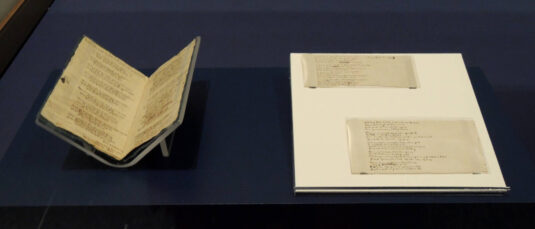 Also in the exhibit are the manuscript notes, sketchbooks, and original storage case of Maria Edgeworth, a prolific novelist for both adults and young readers.
Also in the exhibit are the manuscript notes, sketchbooks, and original storage case of Maria Edgeworth, a prolific novelist for both adults and young readers.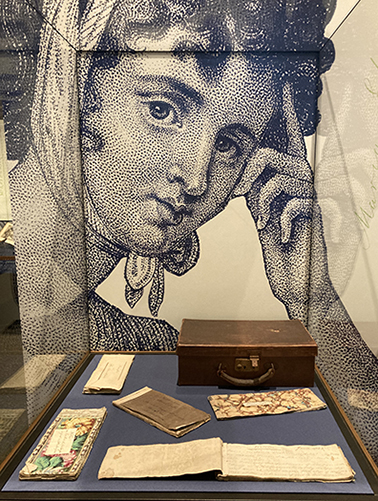 An early edition of Jane Austen’s Sense and Sensibility is displayed, which reminded me of this very interesting fact. When she was only twelve or thirteen, Austen penned The Beautifull Cassandra: A Novel in Twelve Chapters, a tiny work of 465 words total. The Princeton University Press
An early edition of Jane Austen’s Sense and Sensibility is displayed, which reminded me of this very interesting fact. When she was only twelve or thirteen, Austen penned The Beautifull Cassandra: A Novel in Twelve Chapters, a tiny work of 465 words total. The Princeton University Press 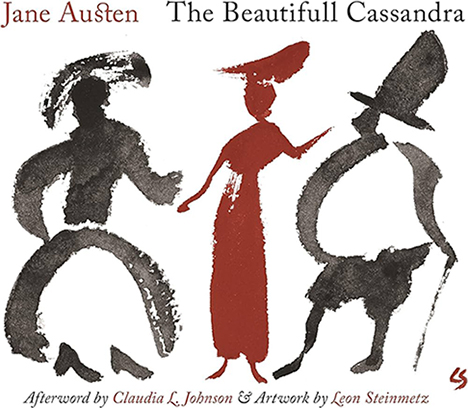 Readers might not be aware that Morrison made significant contributions to children’s literature as well. Collaborating with Slade Morrison, mother and son authored nine books for children. These delightful tales were displayed in Cotsen’s
Readers might not be aware that Morrison made significant contributions to children’s literature as well. Collaborating with Slade Morrison, mother and son authored nine books for children. These delightful tales were displayed in Cotsen’s 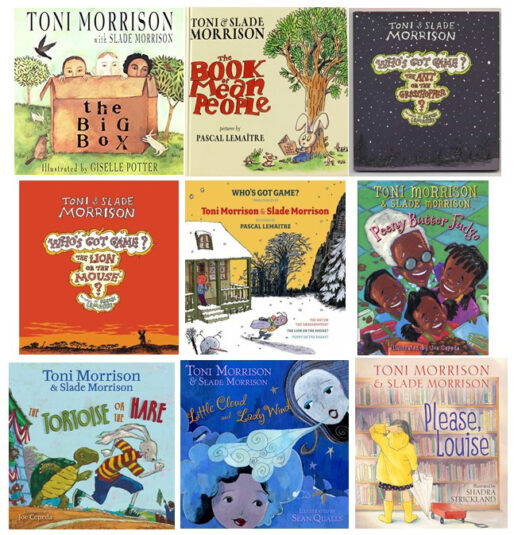 If you are interested in learning more about the exhibit, you will find a digital companion
If you are interested in learning more about the exhibit, you will find a digital companion 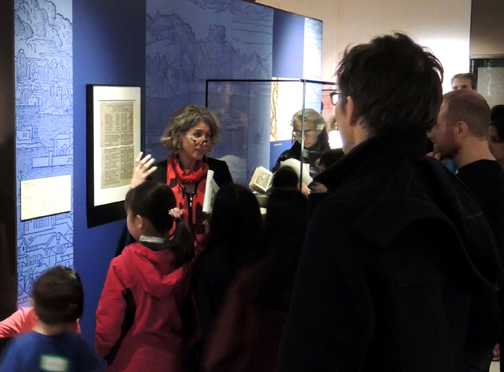 Recently, the
Recently, the 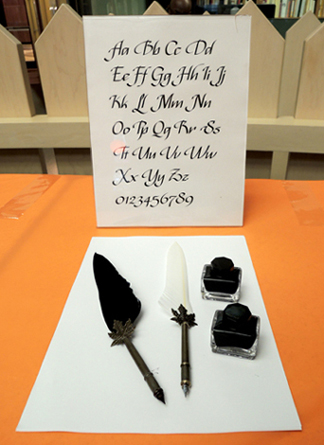 For the calligraphy activity, we purchased both traditional feather quill pens and metal nib quill pens on Amazon, along with bottles of ink. Katie printed different examples of calligraphy so kids could replicate some letters. We also had calligraphy pens and brush pens in rainbow colors. Everyone loved trying the pens, and the calligraphy wasn’t just limited to the English language…
For the calligraphy activity, we purchased both traditional feather quill pens and metal nib quill pens on Amazon, along with bottles of ink. Katie printed different examples of calligraphy so kids could replicate some letters. We also had calligraphy pens and brush pens in rainbow colors. Everyone loved trying the pens, and the calligraphy wasn’t just limited to the English language…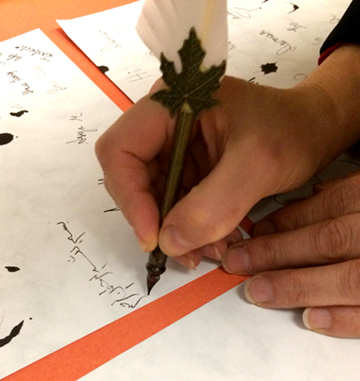 We also had a massively popular typewriter petting zoo. There were 5 typewriters in all, 2 working, 2 non-working, and 1 toy for the really little kids. Kids could touch, explore, and clatter away on them! Katie and I were a wee bit worried about how loud the zoo would be, but quickly learned that the sound of multiple typewriters is actually incredibly soothing (at least to us!).
We also had a massively popular typewriter petting zoo. There were 5 typewriters in all, 2 working, 2 non-working, and 1 toy for the really little kids. Kids could touch, explore, and clatter away on them! Katie and I were a wee bit worried about how loud the zoo would be, but quickly learned that the sound of multiple typewriters is actually incredibly soothing (at least to us!).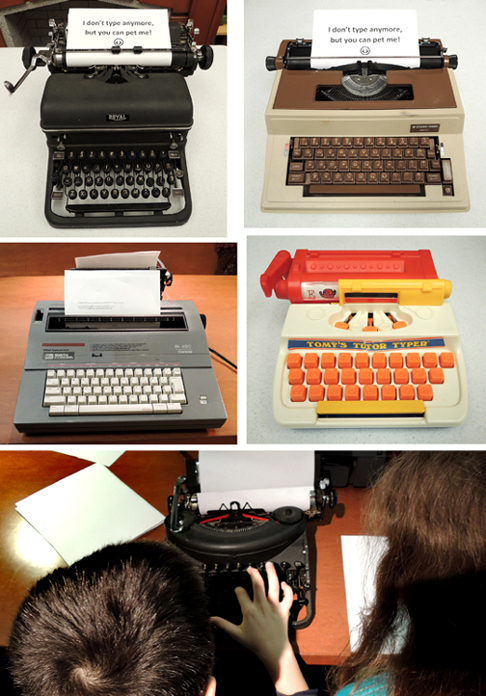 The final activity was something I’ve been wanting to do ever since I spotted in on the
The final activity was something I’ve been wanting to do ever since I spotted in on the 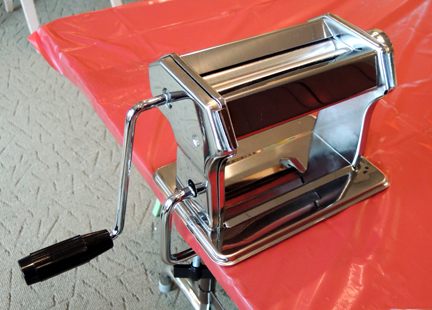 The steps for the activity are as follows: Firs, use a tool to carve a design into a foam sheet. The tool can be a pen, pencil, or wooden scratch art styluses. The foam sheets are the same material that meat is packaged on. We bought thinner versions on Amazon (Presto foam printing plates, a 100 pack of 6″ x 4″ sheets is $15).
The steps for the activity are as follows: Firs, use a tool to carve a design into a foam sheet. The tool can be a pen, pencil, or wooden scratch art styluses. The foam sheets are the same material that meat is packaged on. We bought thinner versions on Amazon (Presto foam printing plates, a 100 pack of 6″ x 4″ sheets is $15).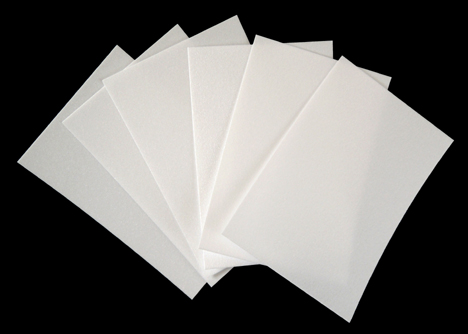 Next, roll paint over your engraved foam sheet. We used trays to reduce the mess. They were definitely helpful!
Next, roll paint over your engraved foam sheet. We used trays to reduce the mess. They were definitely helpful!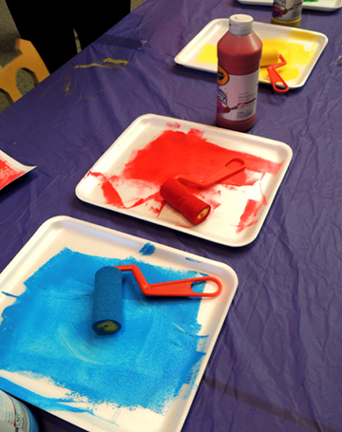 Finally, place a piece of paper on top of your painted engraving and run it through the pasta machine printing press. Peel the foam sheet and the paper apart, and you have a beautiful custom print!
Finally, place a piece of paper on top of your painted engraving and run it through the pasta machine printing press. Peel the foam sheet and the paper apart, and you have a beautiful custom print!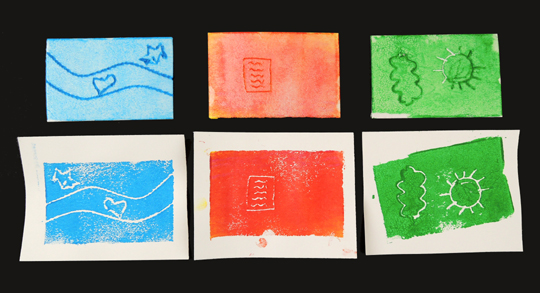 Important! Make sure the pasta machine is set to a wider setting. As you can see in the photo below, if the machine setting is too narrow, the paint will just squish into the lines of your engraving. The wider setting allows to white lines of your design to appear.
Important! Make sure the pasta machine is set to a wider setting. As you can see in the photo below, if the machine setting is too narrow, the paint will just squish into the lines of your engraving. The wider setting allows to white lines of your design to appear.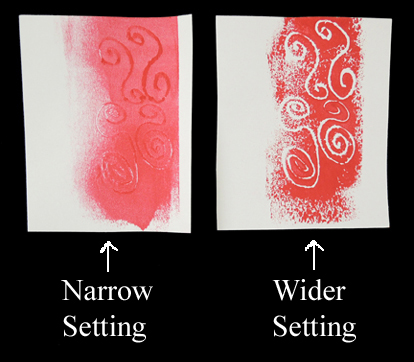 Also, make sure kids know that if they want to print words, they have to carve them backwards as the printing process reverses the carved image. And you might want paper plates handy so kids can transport their still-damp prints home.
Also, make sure kids know that if they want to print words, they have to carve them backwards as the printing process reverses the carved image. And you might want paper plates handy so kids can transport their still-damp prints home.